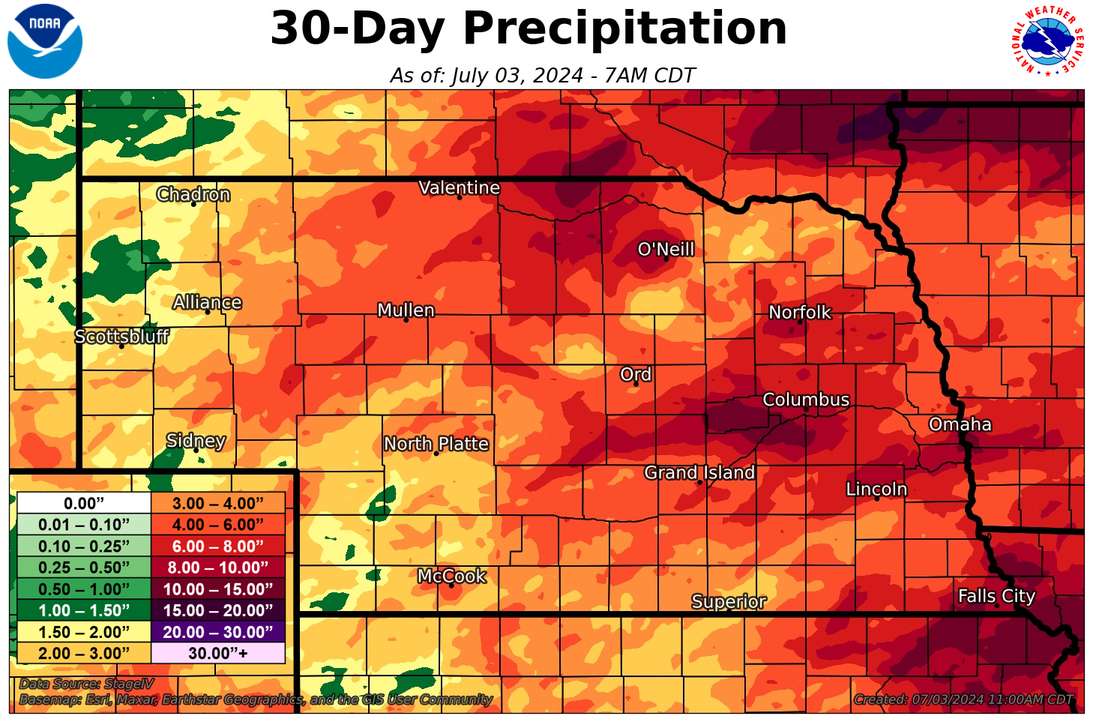2024 CROP CONDITIONS: REGIONAL INSIGHTS AND CHALLENGES
Precipitation: from drought to floods, it's already been all over the place this year. And as we head into the heart of the 2024 growing season, the impact on crop development is a big question mark.
Has there been too much rain? Not enough? What do the fields actually look like after a wild start to the year? Which territories are most at risk? Which ones are helping to boost overall crop ratings (which are better than last year's, according to the latest USDA crop reports.)


Some of our agronomy experts came together at the AgriGold Specialty Products conference recently to answer exactly those questions.
Here's a closer look at crop conditions in your region and what to expect for the rest of the season, from agronomists Sam McCord, Emily Prevo, Kevin Gale and Nick Fredricking.
Key Takeaways:
- The 2024 growing season has experienced unusual weather patterns, with excessive spring precipitation leading to late and extended planting windows.
- There is a heightened focus on disease management this year, particularly with tar spot. This necessitates vigilant scouting and timely fungicide applications.
- Due to substantial nitrogen loss from heavy rains, effective crop stress management during crucial growth stages, along with optimized nitrogen management, is essential.
Sam McCord - Nebraska
Nebraska saw its wettest spring in over two decades. The extended planting window led some farmers to finish planting as late as early June — which was both unexpected and challenging. But effective crop management was crucial in navigating these conditions successfully.
Crop Development and Concerns: Sam predicts a significant year for tar spot and urges vigilant scouting. Concerns about the current transition from El Niño to La Niña are rising; this transition can cause moisture shortages during critical crop growth stages.

With lack of rain and excessive heat, stress during grain fill is a major concern for corn. For soybeans, Sam anticipates stress during pod fill. This could potentially limit top-end yields, especially for dryland soybeans.
Emily Prevo - Southern Iowa
Spring Conditions and Planting: Emily noted a wet, varied spring with two big planting windows for southern Iowa. Planting began around April 15, with cool rains shortly after. This caused the seed to sit in the ground for about three weeks. The second big planting window came in early to mid-May, followed by late-planted soybeans in early June. Despite varied conditions, early-planted corn and soybeans are looking promising.
Crop Development and Concerns: Emily shares Sam’s concern about tar spot, which has already appeared in Missouri this growing season and is expected to spread further. The large planting window has also resulted in varying corn sizes, which is a reminder of the importance of minimal stress until after V6. This window helps ensure proper root development.
Despite challenges, Emily remains hopeful today’s genetics will withstand these conditions. She also highlights the importance of managing nitrogen through side-dressing and banding, as rainfall has caused some nitrogen loss.
Kevin Gale - Northern Illinois
Spring Conditions and Planting: Kevin describes 2024 as a mixed-bag year for northern Illinois. By mid-May, only 42% of planting was complete, compared to 80% at the same time last year. Despite less rainfall than normal, mid-May corn is performing well. Clay soils have fared better than other types, but soil compaction and sidewall smearing have caused yellowing issues in corn and soybeans.
Crop Development and Concerns: Excessive rain could lead to disease, particularly tar spot, if conditions remain wet and hot. Kevin anticipates greensnap in Illinois — and surrounding areas — due to recent high winds. Sulfur issues have also emerged due to shallow root systems and rainfall-related nitrogen loss. Overall, Kevin stresses the importance of continuous monitoring and adaptation to varying conditions.
Nick Fredricking - Southeast Illinois
Spring Conditions and Planting: Nick reports that southeast Illinois also faced a wet spring, with significant planting windows in mid-April and late May. Farmers in this area are experiencing soybean root disease and mesocotyl infections, along with small outbreaks of gray leaf spot — all indicative of excessive spring moisture.
Crop Development and Concerns: Nick predicts greensnap and root lodging will be major issues this summer, exacerbated by severe weather. He expects lower yields and advocates for correctly timing fungicide applications to inhibit spore development. Nick is also concerned about corn and soybean root issues and diseases such as sudden death syndrome and red crown rot in soybeans. Weed pressure, especially from waterhemp, is anticipated to be significant. With all these possibilities, he emphasizes the need to scout fields regularly and monitor crop health closely. He urges farmers to work with their AgriGold agronomist if disease, insect or weed pressure is high and a chemical application is warranted.
Broad View of 2024 Crop Conditions and Outlooks
The 2024 growing season has been characterized by variability and extended planting windows — leading to widespread differences in crop development. Harvest is also expected to be varied and spread out due to this year’s diverse planting conditions.
Key concerns across all regions include disease management, particularly for tar spot, and the impacts of severe weather. To optimize yields, effective nitrogen management and vigilant monitoring will be crucial.
As we move forward, staying adaptive and responsive to these changing conditions will be essential for a successful growing season. Reach out to your local AgriGold agronomist for questions or help regarding the 2024 growing season.



